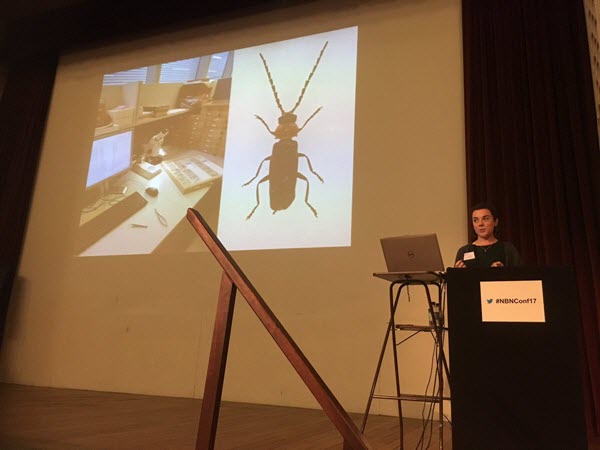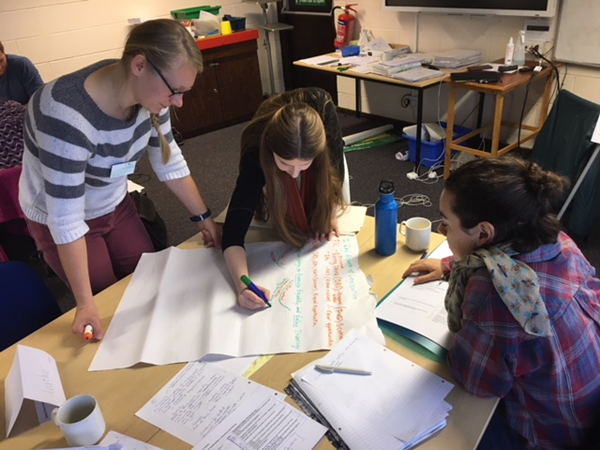November proved to be an eventful month as the ID Trainers went itinerant.
The first couple of weeks of the month were the last of our curation placements in the museum. In October’s ID Trainers blog, Steph gave an overview of what we’ve been up to during our time with the various departments and the final two weeks were filled with tying up loose ends. Although we’re looking forward to what Phase 4 of the traineeship brings, it was with more than a little sadness that we finished up our time with the respective curatorial departments. We’d like to extend our thanks again for the support of the curation teams and the brilliant experience and insights gained during our placements. All of us are keen to get back in the collections as soon as possible.
In the middle of the month we headed off to the wonderful National Museum Cardiff for the National Biodiversity Network Trust (NBN) Conference: ‘Data – what is it good for?’ A fascinating range of talks and workshops were on offer, from Professor Simon Leather speaking about science and the ‘Twitterati’ to an exploration of network ecology from Professor Yvonne Buckley. Throughout the conference, the NBN Atlas was a key topic of conversation. Most excitingly, and with totally unabashed bias, was Steph Skipp’s chance to tell the attendees about what the ID Trainers traineeship is all about. Steph was absolutely fantastic, speaking with passion and poise, and made us all proud. All the presentations from the conference’s two days can be accessed here on the NBN website. And I’m very pleased to report that there was also time for a quick snoop around the Museum’s collections.
Almost as soon as we arrived back from the NBN conference, we were up to the Field Studies Council’s Blencathra centre for the Education and Training (EAT) Award course. This proved a highly useful week as we gained a deeper understanding of the theory and practice of teaching and tutoring. A central aim of the traineeship is to equip us with the necessary skills and confidence to pass on the knowledge we acquire during our year, and continue to do so into the future. The EAT course has provided an excellent basis as we begin Phase 4 – the Learning and Engagement section of traineeship. Despite the week being incredibly busy, we managed to fit in a spot of exploration of the beautiful surroundings, including finding Crypotgramma crispa (Parsley Fern) on the scree slopes above the centre.
The day after our return (rather late in the evening) to London following the EAT Award, I attended my first Botanical Society of Britain and Ireland (BSBI) Annual Exhibition Meeting (AEM). Not only did I attend, but I was lucky enough to be presenting a talk about the traineeship and exhibiting a poster. As a keen botanist, this was an excellent opportunity and I had a wonderful time. It was incredibly heartening to learn about the magnificent work being done by botanists. In addition, it was rather fun to be able to meet some of the celebrated names in the botanical world, putting faces to the authors of many books and floras!
Now, back at the Natural History Museum (NHM), we’re primed and ready to tackle the fourth and final phase of the traineeship and make the most of our remaining time at the Museum.
Written by Alex Mills, ID Trainer for the Future



